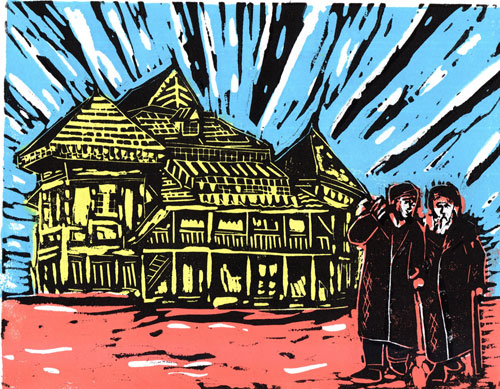Lost Treasures: The Wooden Synagogues of Eastern Europe The Artwork of Bill Farran
Nasielsk, Poland - Original Linocut, Color
Nasielsk, Poland - Original Linocut, Color
Nasielsk, a town in east-central Poland in the Warszawa province, received its first municipal privileges in 1386. The Jewish community dates to the 16th century. By 1910 there were 4,742 Jews, representing 76% of the population. Jews thrived economically in crafts and trade, and by working in a tannery and a plant that manufactured clothing and pearl buttons. Others participated in the town’s economy as farmers, merchants, and more. There were Jews who were wealthy or poor, and those who were secular or religious. However, their numbers dwindled to 2,691 by 1921 as economic hardship caused many to emigrate elsewhere.
The great Nasielsk synagogue was built in 1650 by Simcha Weiss, son of Shlomo of Luck. The first official inventory of important buildings in Poland, “A General View of the Nature of Ancient Monuments in the Kingdom of Poland,” led by Kazimierz Stronczynski from 1844–55, describes the Nasielsk Synagogue as one of Poland's architecturally notable buildings. The deteriorating synagogue was demolished in 1880 and replaced by a new brick one constructed on its site.
During World War II, Nasielsk’s Jewish citizens were murdered by the German Nazis.
Purchase a print
Original linocut prints are 8x10 inches, and are available either unmatted or in an 11x14 matte.
I also offer matted 5x7 digital prints. These prints are created from high-res digital images and come in an 8x10 matte.



